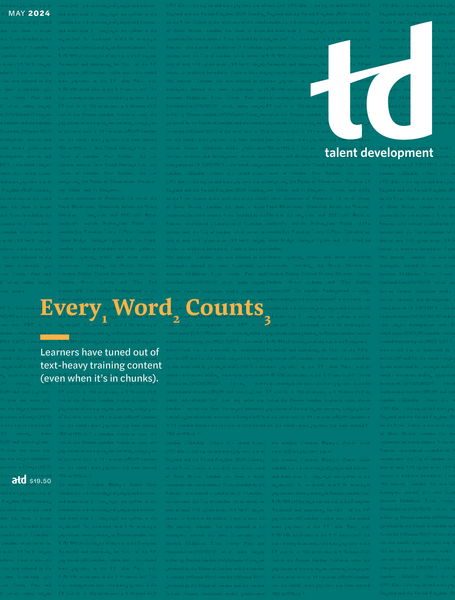TD Magazine Article
Generations Are Arbitrary Labels
Different age groups have more commonalities than differences.
Wed May 01 2024

Boomers. Zoomers. Gen X. You hear about it frequently: "Managers don't want to hire Gen Z individuals." "Boomers can't manage technology." But is it fair to issue such blanket statements?
McLean & Company's Making Sense of Generations in the Workplace report considers how culture—social, economic, political, and organizational—often stereotypes different generations. Such arbitrary labels are not only useless, but they can also be detrimental, the report notes, adding that "people are inherently multidimensional and highly complex; explaining people's identities and their unique values, attributes, and behaviors as adhering to the characteristics of a label is overly reductive."
When it comes to teams, for example, generational stereotypes can create an us-against-them dynamic, a mindset of opposition and difference.
There are more similarities than differences in generations. Pigeonholing individuals based on generation fails to take individual differences into account, such as employees who may have caregiving duties or are neurodiverse.
For L&D, rather than assuming that individual members of a generation represent specific characteristics, develop personalized learning based on their preferences. Give employees of all generations a wide range of options, advises the report, and let them select from among the choices based on their unique interests and situations.
Beyond team collaboration and learning, consider such developmental initiatives as mentoring and coaching. Reverse mentoring should focus more on experience than age, for instance. In an interview with TD magazine, Janet Clarey, practice lead for learning solutions at McLean & Company, explains that "Reverse mentorship is more about senior-level and junior-level partnerships for the purpose of mutual learning and, when done correctly, does not serve to divide by generation. For example, an older person may be in a junior-level role, while a younger person could be in a senior-level role."
The mentoring can involve factors such as career goals and interests, Clarey continues. Those aspects are "always important considerations and should be determined through intentional (and ideally regular) conversations between junior- and senior-level employees."
On a personal basis, all people can strive to unlearn the generational biases they may hold. Consider different perspectives and practice compassion. Be inquisitive and initiate a conversation.

